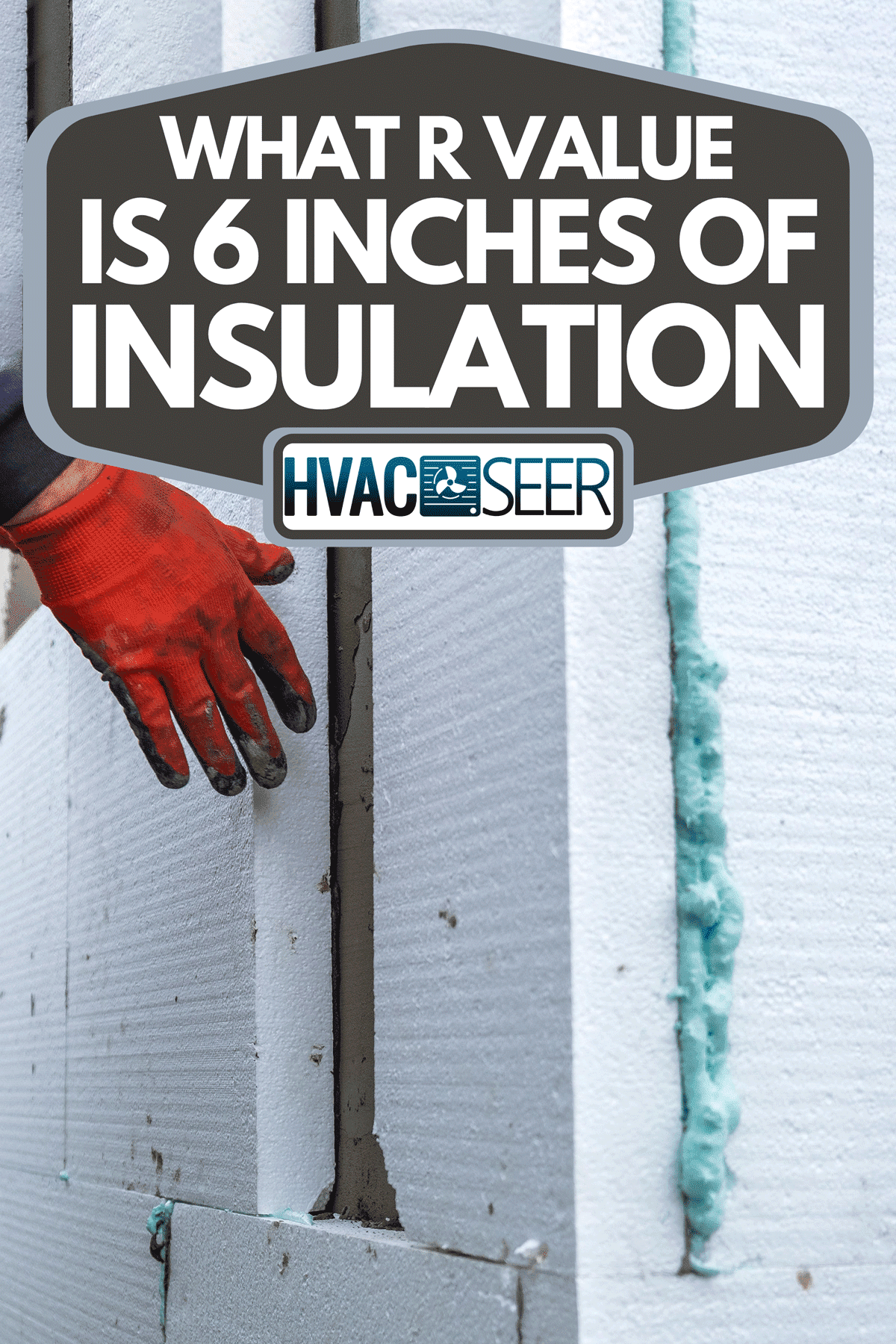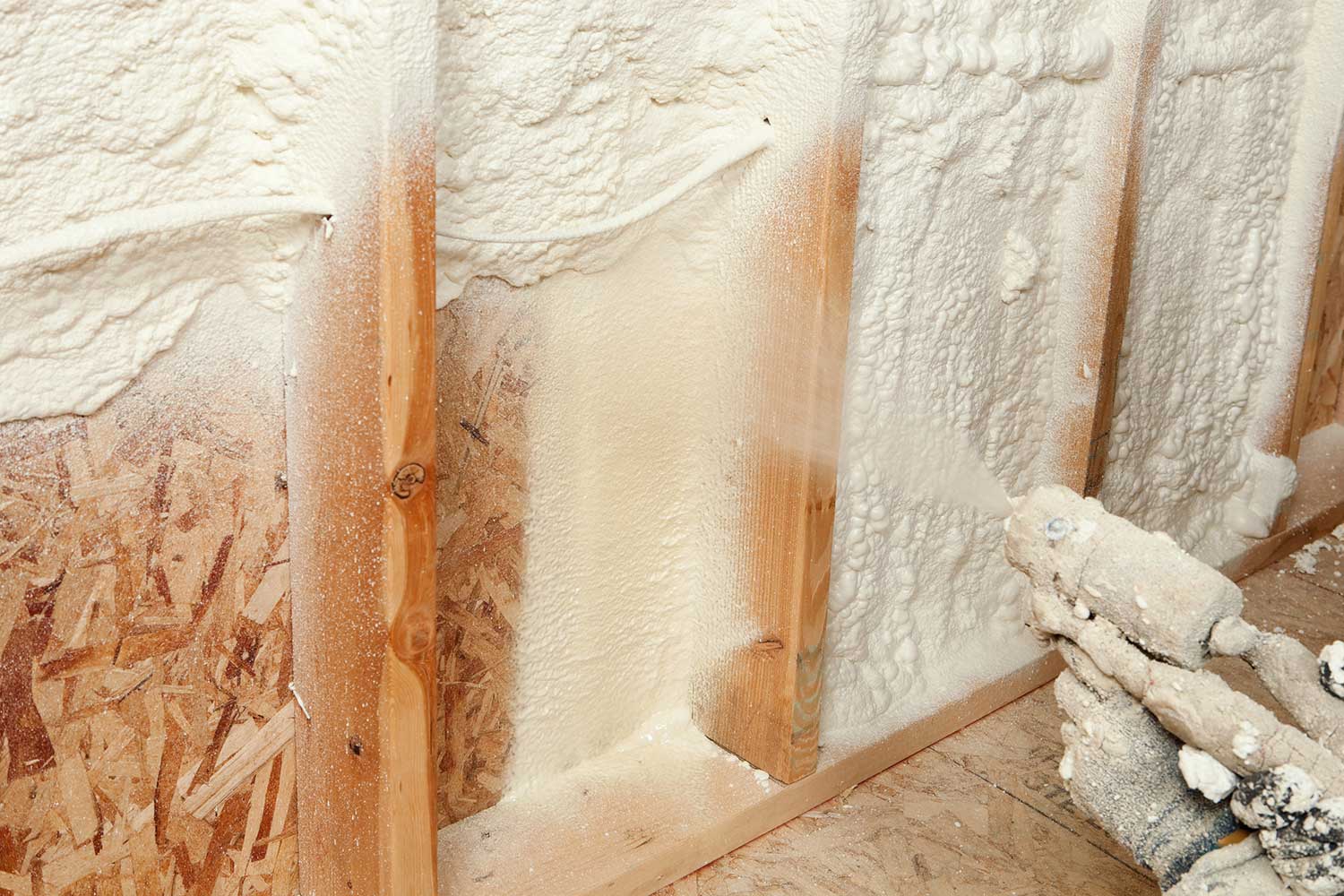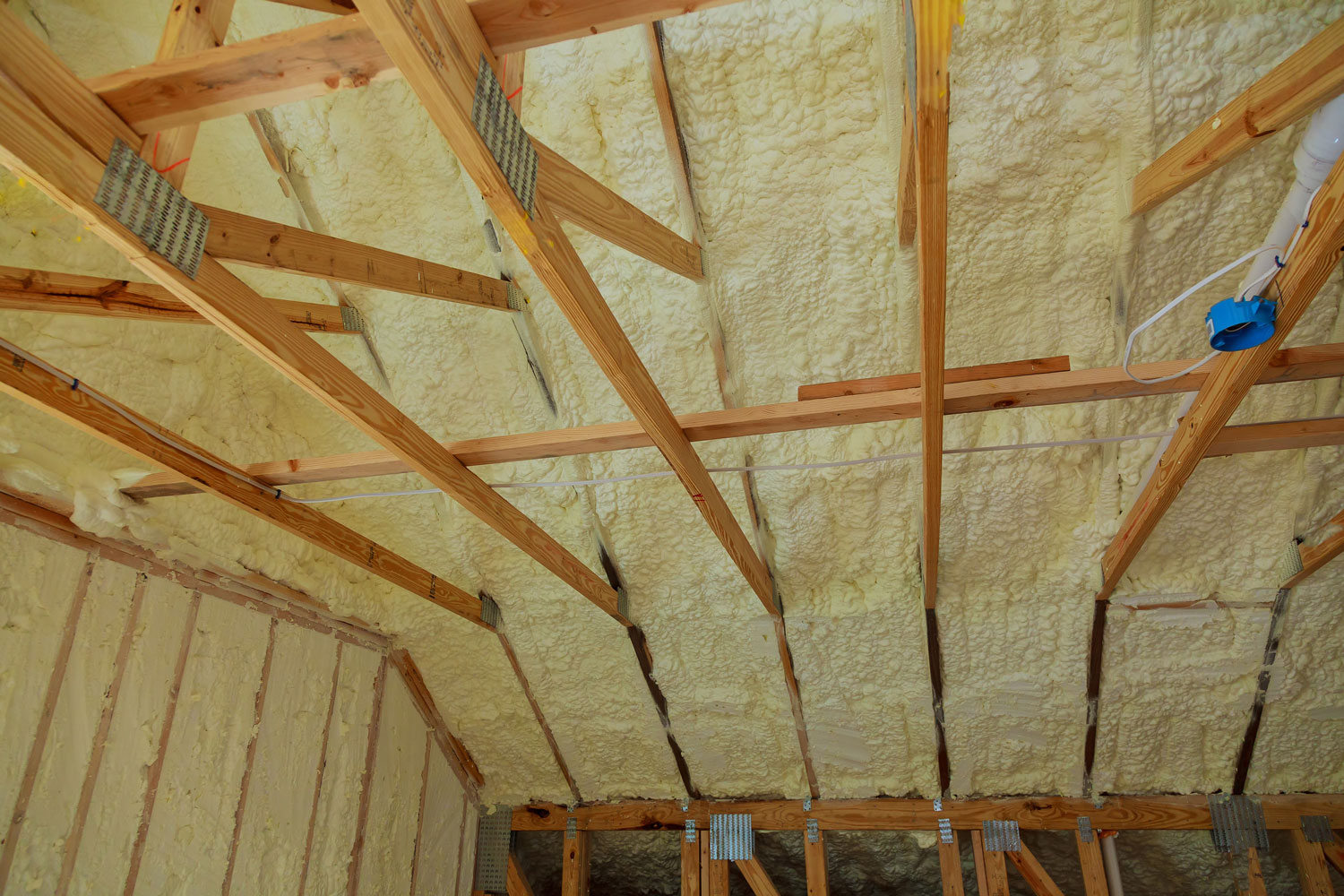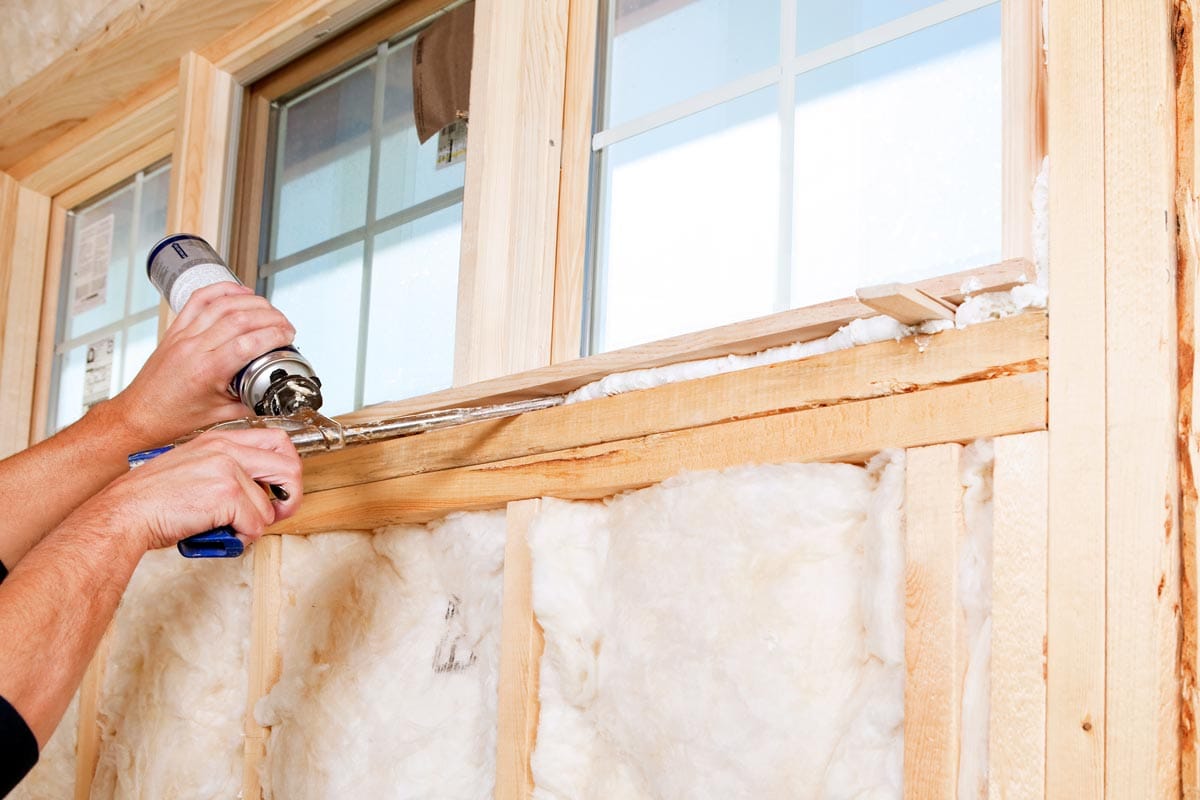A well-insulated home not only keeps the cold out but also lowers your energy bills. Therefore, how do you ensure you install the highest standard of insulation? We've sought out the experts to find an answer for you.
R-values are determined per inch of the material used; higher R-values mean better insulative quality. The quality of insulation is largely dependent on the type of insulation used as seen by the following R-values per inch per insulation type:
- Panel or Rigid Foam Board - range between 3.8 to 8 per inch
- Fiberglass - range between 3.1 and 4.3 per inch
- Cellulose loose fill - range between 3.2 and 3.8 per inch
- Open Cell Spray Foam - 3.5 per inch
- Closed Cell Spray Foam - ranging between 6 and 6.5 per inch
To determine the R-value of six inches of insulation, multiply the insulation type's R-value by six.
Continue reading to know the R-value of a six-inch insulation, the different types of insulation, those with the highest R-values, how the quality of insulation is measured using R-values, and the best for use in your home.

Types Of Insulation And Their R-Values
Insulation is a vital addition to your comfort by keeping the home warm during winter and protecting it against extreme heat during summer.
The R-value measures the resistance of the flow of heat through an insulation material. These values are designated per every inch of insulation material used. The higher the R-value, the higher the quality of insulation.
The R-value required to insulate your home generally depends on the part of your house you intend to insulate and where you live. Let us look at the types of insulation and their corresponding R-values.
Panel or Rigid Foam Board
This type of insulation is installed using materials such as polyurethane and polystyrene. The R-values range between 3.8 and 8.0, which is the highest compared to other insulation materials.
It is typically installed, whilst residential buildings are being constructed, including in the walls, foundations, floors, ceilings, and basements. They are mainly fitted in the interior of homes, but can also be installed on the exterior, provided the material used can protect against water and UV light.
Panel insulation is available in a standard thickness, ranging from half an inch to two inches. Sometimes, special orders can be made from particular manufacturers for boards with a thickness of up to six inches to be used in very cold climates.
Fiberglass
Fiberglass is a common material used to insulate homes, especially on unfinished walls, ceilings, and floors. They are available in rolls, blankets, and batts. The R-values are between 3.1 and 4.3 per inch.
It’s easy to install, making it possible for a homeowner to install without any professional help. This is because it does not need any special equipment, and neither is it expensive.
Check out this Fiberglass Roll on Amazon.
Cellulose Loose Fill
The R-values for this kind of insulation are between 3.2 and 3.8 per inch, making it one of the least effective. It is also inexpensive and easy to install, which is done by blowing it into the required area using a hosepipe.
Cellulose is made up of loosely bound particles, which are normally installed in cavities that may already have been there or developed over time in places such as the walls or unfinished attic floors.
However, they can still be used in newly constructed buildings or improve the energy efficiency of an existing building.
Spray Foam

Spray foam comes in two types, mainly open-cell and closed-cell. Open-cell spray foam has an R-value of around 3.5 per inch. The closed-cell, which is more effective, has a higher R-value ranging between 6 and 6.5 per inch.
Open-cell foam is soft and flexible, while closed-cell foam is more rigid and flexible. It comes in liquid form that expands into foam when sprayed on a surface. This insulation is suitable for filling in cavities enclosed by walls.
Have a look at this Spray Foam on Amazon.
It is excellent for use in new walls before installing sheet-rock and drywall, not forgetting attics yet to be finished, and also great for adding insulation to existing buildings.
Like most other foam products that expand when sprayed, it is recommended that a professional install it because it can irritate the skin and stain clothes. However, if you are up to the task, wear protective clothing such as safety glasses, face masks, and coveralls.
What Is The R-value For 6 Inches Of Insulation?
The recommended R-values for different regions in the US have been provided by the government. This means you can use it as a guide whenever you need to insulate your home or office.
As explained in the previous paragraphs, there are various types of insulation with different R-value ratings. Therefore each type of insulation that is six inches wide will have different R-values. Let’s take a closer look for better comprehension:
If you will be installing a rigid board that has an R-value of 6.5, and you live in a very cold area requiring six inches of insulation, the total R-value will be 6.5 x 6 or (6.5+6.5+6.5+6.5+6.5+6.5), totaling to an R-value of 39.
If on the other hand, you would like to use spray foam with an R-value of 3.9 to create a thickness of six inches, the total R-value will be 3.9 x 6 or (3.9+3.9+3.9+3.9+3.9+3.9) totaling 23.4.
In a nutshell, all the R-values of each inch of insulation are added up to get the total rating for the insulation installed.
What Insulation Has The Best R-Value Per Inch?
The higher the R-value, the higher quality of insulation it is. Rigid foam boards or panels have the highest ratings, meaning they retain more heat in a home than other insulation materials.
The boards or panels are manufactured from a variety of materials that have different ratings. For example, a fiberglass rigid panel has an R-value of 2.5, which is very low compared to a Polyurethane Rigid Panel, which is rated at 6.5.
Does Doubling Insulation Double R-Value?
Yes, if you double the thickness of the insulation in your home, the R-value also doubles, saving you more energy.
Increasing the thickness of your insulation further reduces the flow of heat from the inside of your home to the outside when the weather is cold. It also further slows down the heat from outside the home to inside during the warm season.
Is R19 Insulation Better Than R13?
So far we have confirmed that there is a direct relationship between the amount of heat transferred and the amount of insulation. The higher the R-value, the better the insulation at slowing down the transfer of heat from inside your home to outside.
Therefore, R19 provides better insulation than R13, and R32 provides better insulation than R19. The higher the rating, the better the insulation.
What Is A Good R-Value For Ceilings?

It is important to think of insulating your home on all sides, including the floor, walls, and ceilings.
The R-value of the ceiling insulation you need to install depends on the climate of the area you live in. Overall, a rating of 30 is recommended and if there is an attic the rating recommended is between 38 and 49.
What Should The R-Value Be For Exterior Walls?

Adding insulation to the exterior wall is one of the solutions to keeping your home warm and cozy during the winter.
Basically, you can use any type of insulation you wish, depending on your expectations, budget, and if you will choose to hire professional help.
If you go for fiberglass insulation, the entire drywall has to be brought down. It is easy to install, therefore you can install it yourself. The downside, however, is that it sags and shifts with time, meaning it will have to be replaced at some point in the future.
Foam board insulation is an excellent choice as it has top ratings, and you will not need to replace it once it is installed. Also, make sure it can protect against UV light and water.
Foam spray is another alternative, but as indicated above, a professional is the most suitable for this type of job because of .
In Closing
The R-value measures the resistance of flow of heat on the type of insulation used. A high R-value means the quality of insulation is high, and the reverse is also true.
Insulation materials come in a wide variety of brands each with different R ratings. The type you chose depends on which part of your home needs to be insulated, the climate of the area in which you live, and your budget.
You may want to check out our previous posts and find out if cellulose insulation loses its R-value over some time, and if a drywall adds any R-value to your current insulation.


